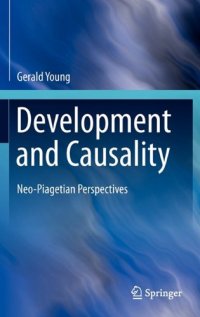
Ebook: Development and Causality: Neo-Piagetian Perspectives
Author: Gerald Young (auth.)
- Tags: Developmental Psychology, Clinical Psychology, Child and School Psychology
- Year: 2011
- Publisher: Springer-Verlag New York
- Edition: 1
- Language: English
- pdf
Development and Causality
Neo-Piagetian Perspectives
Gerald Young
Over the years, Jean Piaget’s revolutionary study of infant and child development has inspired much discussion and debate, evolving through the work of his followers and critics. Development and Causality continues in this tradition,bringing new depth to the theoretical base, integrating Piagetian and Freudian/Eriksonian models as well as presenting far-reaching original theory. This comprehensive synthesis of the field concentrates on core areas such as language acquisition, self development, social cognition, personality development, attachment, narrative development, and emotional development, and is written so readers at both basic and advanced levels of familiarity may benefit. Dozens of tables, graphs, and other visual materials aid readers in comprehension; and the book:
- Reviews Piaget’s original model as the starting point for current theory.
- Introduces the author’s 25-step model of LIFESPAN cognitive development, and compares IT TO Case’s and Fischer’s models of cognitive socio-affective correspondence.
- Extends current theory in terms of self development, cognitive perception/misperception of the other, self-regulation, theory of mind, and multiple intelligences.
- Focuses in detail on socio-affective development: personality, emotions, attachment.
- Examines causality mechanisms in depth, from hemispheric specialization to complex adaptive systems.
- Speculates on evolutionary forces underlying developmental stages.
Development and Causality is a bedrock reference for researchers and students in child and developmental psychology, and lends itself to practical applications for clinicians.
This book sets forth a new model of development from a causal perspective. As this is an area vital to several disciplines. It has been written at multiple levels and for multiple audiences. It is based on the work of Piaget and Neo-Piagetians, but also covers other major models in development. It has elements that make it attractive as a teaching text, but it is especially research-focused. It has clinical applications. It presents many new ideas and models consistent with the existing literature, which is reviewed extensively. Students, researchers, and practitioners should find it useful. The models presented in the present work build on models introduced in prior publications (e.g., Young, 1990a, 1990b; 1997).